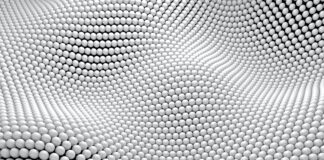Holographic displays represent a cutting-edge technology that has been a staple in science fiction for decades. The term “holography” itself conjures visions of three-dimensional, dynamic displays, projecting images that seem to float in thin air. In reality, holographic displays bring us closer to this futuristic vision, offering the potential for immersive visual experiences that go beyond traditional flat screens. These displays are gaining traction in various industries, from entertainment and medical imaging to education and design, revolutionizing the way we visualize and interact with digital content.
Holographic displays create 3D visuals by employing the principles of holography, a technique that records and reconstructs light waves to generate a 3D image. Unlike traditional displays that render a 2D representation, holographic displays reproduce the spatial and depth information of a scene, enabling viewers to perceive a true three-dimensional image. This breakthrough technology has the power to transform the landscape of visual communication, providing an unparalleled level of engagement and realism.
The core principle of holography is interference, where light waves interact to produce patterns that encode the information necessary to recreate a 3D image. A holographic display system involves a coherent light source, such as lasers, which illuminates an object or scene. The light waves scattered from the object then meet the reference beam, generating an interference pattern on a holographic plate or a light-sensitive medium. This interference pattern, essentially a 3D map of the object, contains information about the amplitude and phase of the light waves.
In essence, a holographic display captures and reproduces the complex interplay of light waves that occurs when light reflects off an object in the real world. When viewing a holographic display, our eyes perceive this intricate interplay of light, and our brains interpret it as a three-dimensional image with depth and perspective. Unlike conventional 3D displays that require specialized glasses, holographic displays enable a glasses-free 3D viewing experience, making them more convenient and appealing to a broader audience.
Furthermore, the interactivity and engagement provided by holographic displays open up exciting possibilities in various applications. In the field of medical imaging, for instance, holographic displays offer doctors and surgeons the ability to examine patient data and perform virtual surgeries in a realistic 3D environment. This can lead to improved surgical planning, enhanced educational experiences, and ultimately, better patient outcomes.
In the entertainment industry, holographic displays hold promise for creating lifelike 3D characters and scenes in movies, games, and live performances. Imagine watching a concert and seeing your favorite artist performing in true 3D, right in front of you. Holographic displays can also revolutionize advertising, enabling businesses to showcase products in a captivating and interactive way, enhancing consumer engagement.
However, the development and widespread adoption of holographic displays pose various technical and practical challenges. Achieving high-resolution, full-color holographic displays requires advancements in display technology, optics, and computational power. Currently, many holographic displays have limitations in terms of resolution and viewing angles. Researchers and engineers are continuously working to overcome these obstacles to deliver holographic displays that meet the expectations of modern consumers and industries.
Holographic displays represent a leap forward in visual technology, offering the potential to create immersive, three-dimensional experiences. By leveraging the principles of holography, these displays recreate the depth and spatial information of a scene, presenting a new paradigm in visual communication. With ongoing research and technological advancements, we can anticipate a future where holographic displays become an integral part of our daily lives, transforming how we perceive and interact with digital content.
The journey toward widespread adoption of holographic displays involves a multidisciplinary approach, blending advancements in optics, materials science, computer graphics, and display technologies. Optics play a pivotal role in manipulating light waves to recreate 3D images that appear tangible and lifelike to the observer. Advancements in diffractive and refractive optical elements, such as beam splitters and spatial light modulators, are crucial for refining the quality and realism of holographic displays. Moreover, advancements in light sources, particularly lasers, are vital to ensure the coherence and intensity of light required for creating high-fidelity holograms.
Materials science also plays a fundamental role in the development of holographic displays. Innovations in light-sensitive materials, photopolymers, and metamaterials significantly impact the recording and storage of holographic data. These materials need to efficiently capture and retain the interference patterns produced during holographic recording. Researchers are continually exploring novel materials that offer enhanced sensitivity, durability, and suitability for mass production of holographic displays.
On the computational side, complex algorithms and software are essential for rendering 3D scenes, converting them into holograms, and ensuring smooth real-time interactions with the holographic content. Realistic rendering of 3D scenes demands substantial computational power, as holographic displays need to generate a multitude of viewpoints to provide a convincing 3D experience. As computing technology continues to advance, more efficient and scalable algorithms are being developed to facilitate seamless holographic rendering and user interactions.
In the realm of display technology, significant progress is being made to enhance the resolution, refresh rates, and overall quality of holographic displays. Emerging display technologies, such as micro-electro-mechanical systems (MEMS), liquid crystal on silicon (LCoS), and digital micro-mirror devices (DMDs), are being integrated into holographic display setups. These technologies offer improved control over the light modulation required for generating precise interference patterns and enhancing the overall holographic image quality.
Beyond entertainment and medical applications, holographic displays hold immense potential in education and research. They can revolutionize the way we visualize complex concepts, historical artifacts, or abstract scientific models. Educational holographic content can be designed to be interactive and engaging, allowing students to explore and understand subjects in a more hands-on, immersive manner. This has the potential to enhance learning outcomes and make education more accessible and enjoyable.
As research and development efforts continue, holographic displays are moving closer to mainstream adoption. The ultimate goal is to create seamless, glasses-free, and full-color holographic displays that can be integrated into various devices, from smartphones and tablets to automotive heads-up displays. The day when we can interact with realistic, volumetric holograms in our everyday lives is not too far, and it holds the promise of transforming how we perceive and interact with digital information in the future.














